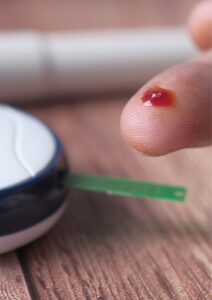Hello there, science aficionados!
Today, we’re going to delve into the incredible world of an essential hormone called Glucagon-like peptide 1, or GLP-1 for short. Ready to unlock the secrets of this tiny, yet mighty hormone? Let’s dive right in!
The Birth of GLP-1
The story of GLP-1 begins in the early 1980s when scientists were investigating the genes of some pretty unusual creatures – anglerfish and chickens! They stumbled upon a mysterious substance and named it GLP-1. It initially existed in an inactive form, like a sleeping giant waiting for the right moment to show its power. A few years later, scientists discovered the biologically active form of GLP-1 by studying extracts from the gut.
The Glucagon Family
Now, GLP-1 isn’t an only child. It belongs to a family of hormones known as the glucagon family, which includes glucagon itself, GLP-2, a hormone called GIP, and glucagon-related peptides (GCRP). What’s fascinating about GLP-1 is its strong resemblance to glucagon, sharing almost 45% of its identity. It’s like the two are long-lost siblings in the hormone world!
The Dance of GLP-1
In humans, the concentration of GLP-1 in the body during fasting (i.e., when you haven’t eaten for a while) is relatively low. But here’s where things get exciting! Once you start eating, the levels of GLP-1 in your body can rise 2-4 times. This rise is like a well-choreographed dance performance.
The first act begins 10-15 minutes after you start eating. It’s believed that the nerves running from our brain to our gut, called the vagal nerves, trigger this initial release of GLP-1.
Then comes the second act, which kicks in about 30-60 minutes after you’ve started eating. This rise in GLP-1 levels is thanks to the L-cells in our gut coming into contact with the nutrients from our food. The peak of this hormonal ballet occurs approximately 60 minutes after the start of a meal.
In summary, GLP-1 is a remarkable hormone that helps manage our blood sugar levels and plays a vital role in our digestive system. So, the next time you sit down for a meal, spare a thought for the amazing dance of hormones happening within your body, led by our star of the day, GLP-1!
That’s all for today, folks! Keep an eye out for our next journey into the intriguing universe of science. Until then, keep learning and keep exploring








